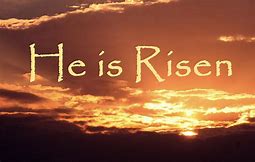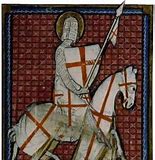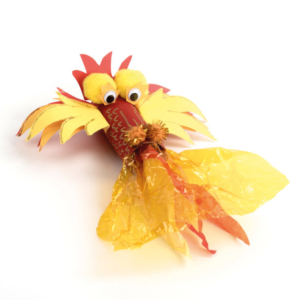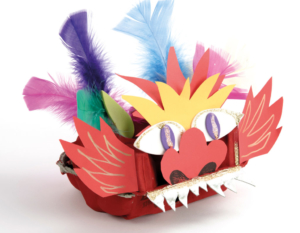Week Beginning 20.4.20 Reception Home Learning Weekly Overview

Dear Parents and Carers,
Welcome back!
I hope you all had a wonderful Easter and a well deserved break.
As it is St George’s Day on Thursday, this week’s learning theme is derived from the story of ‘St George and the Dragon’.
I would also like the children to focus on communicating with others.

Please start the week by reading/ listening to/ watching the story of St George and the Dragon. There are lots of versions of the story.
This is a nice simple version of the story: https://learnenglishkids.britishcouncil.org/short-stories/george-and-the-dragon
Please also watch the two film clips about St George’s Day on this page:
https://www.bbc.co.uk/cbeebies/watch/lets-celebrate-st-georges-day
Personal, Social and Emotional Development (PSED)
- Think about a time when you have been brave like St George. Talk about it with an adult and then draw or write about it.
- Think about the neighbours who live near you. Do any of them live on their own? With the help of your adult, make a happy, colourful picture, or write and decorate a letter for them and post it through their door, to brighten their day.
Communication and Language
- Think about a friend or member of the family that you haven’t spoken to for a while and talk to them over the phone or by video calling them.
- Upload a video to Tapestry telling Mrs Theo and Mrs Gymer about your Easter holidays.
- Think of lots of words to describe the dragon in the story.
- Retell the story of St George and the Dragon in your own words. You could even use props to help you.
Physical Development
- Make St George flags and poles. Does your flag pole stand up on it’s own without falling over? If it doesn’t, how can you solve the problem?
- Play traditional English games such as cricket, skittles and tennis.
- Decorate the inside and outside of your house with the St Georges Day bunting/ flags that you made. (See expressive arts and design)
- Make red roses from junk modelling material.
- Make paper dragons with moving arms and legs. (use split pins or something similar to join)
- Make models of dragons from various construction/ junk modelling materials.
- Make shields and swords from different materials.
- Get yourself dressed in red and white clothes on St Georges Day. (Thursday)



Understanding the World
- Use the internet to find out which countries also have St George as their patron saint of their country. How many are there? Can you find these countries on a map? What do their flags look like?
- What is armour? Who uses it and why? Can you think of any jobs where people need to use armour?
- How has armour changed over time?
- Can you think of any animals that use armour to keep themselves protected? Write a list.
- Who was St George? Find out some things about him.
Expressive Arts and Design
- Design your own dragon-proof protective clothing.
- Design and make a shield that reflects your interests/ nature/ favourite colours.
- Make red and white bunting or flags.
- Paint your face with the St George Cross on St George’s Day.
- Draw what you think the dragon looked like.
- Paint still life pictures of red roses.
- Create your own dragons from junk modelling materials.
- Use tin foil and cardboard to make armour for a roman soldier.
- Sing daily, using the BBC Schools Radio website- https://www.bbc.co.uk/teach/school-radio/eyfs-early-years/z6bgnrd The class love this website and it will be very familiar to them!
- The class also really enjoy singing the following songs during special prayer time:
- https://www.youtube.com/watch?v=DXDGE_lRI0Eh
- ttps://www.youtube.com/watch?v=QCN893hzueQ
- https://www.youtube.com/watch?v=yjh5Kh5Hxu8
- https://www.youtube.com/watch?v=DSpyKsPiUhs
- https://www.youtube.com/watch?v=Cc0QVWzCv9k
- https://www.youtube.com/watch?v=8fdk0oKMmfg
Maths
Focus: number recognition 1-20.
Does your child recognise all numbers within 20? If not, please continue to work on these numbers through playing number games- board games such as snakes and ladders, online games, finding numbers in the environment etc.
If your child does recognise all numbers within 20, please reinforce previous learning by asking your child to place numbers 1-20 in order, counting out objects of a given amount,(for example, ‘Please count out 18 stones from the pile and place it on the number 18’) and asking them to tell you the number that is one more or one less than a given number from 1-20.
On-going Maths Activities – try at least one a day
- Go on a walk and count how many rainbows or teddies you can see in the windows of different houses. Which road has the most?
- Counting objects within the house-This could be anything as simple as counting the cutlery in your drawer!
- Looking for shapes in the environment- Can you see the rectangle on the table? The square on the oven door? How many edges does the bookcase have? Can you name the 3D shape that your cereal box is?
- Using positional and directional language- Where is the teddy? On top, under, behind, in front of, next to. inbetween etc. Use directions to get from one room to another e.g. walk two steps forward, turn left…
- Capacity-Fill the bath and give them your child whichever containers you have at home (jugs, Tupperware). Encourage the language of full, nearly full, half full, nearly empty, empty. Will the water to fill this container fit into another container?
- Time- Create an ‘at home’ timetable together. What shall we do first? What shall do next? What shall we do at the end of the day? Begin to recognise o’ clock times on a clock.
- Money- Empty your purse or money box. Learn the names of the different coins. Use 1p coins to count and add with.
- Patterns- Use every day objects around the home to create patterns e.g. pen, fork, sock, pen, fork, sock. Can the continue and copy your pattern? Can they make their own pattern.
- Length and height- Find three objects from around the home. Can they order them from smallest to largest? Use your feet to measure the length of items in your home (e.g the sofa). How many feet long is it? Counting objects within the house. This could be anything as simple as counting the cutlery in your drawer!
- Addition using objects found within your home- If we have 5 spoons and 3 forks, how many do we have altogether? Include missing numbers e.g I have 5 buttons. How many more do I need to make 10?
- Subtraction using objects found within your home- If we have 7 biscuits and I eat 2 how many biscuits are left?
- Subitising (recognising how many without counting) the amount of objects in a set. How many candles are on the fireplace? How many plates are on the table? etc
- Watch a Numberblocks episode each day at: BBC iplayer or CBeebies.
- Practise counting up to 20. This can be done through playing hide and seek, singing number songs, chanting, board games etc.
- Write out the digits 0 – 9.
- Sing Number songs to practice counting, reciting numbers in order, one more, one less using number songs: Five Little Ducks, Five Little Men, Ten Green Bottles
- Practise counting backwards from 20.
- Look for the numbers on the doors of houses. Do the numbers get bigger or smaller as you go up and down the street?
- Listen to a number song from the CBeebies website. After listening to them, watch again and sing along if you can. Talk about the maths you can see in the video clip.
- Look out of the window and count how many houses or buildings can be seen
- Explore weighing and measuring food on the kitchen scales. Ask, what happens as you place more on the scales?
- Look for numerals on packaging you find around the house. Can your child recognise the numerals and count out a matching amount?
Maths Websites
https://www.topmarks.co.uk/maths-games/5-7-years
https://matr.org/blog/fun-maths-games-activities-for-kids/
https://www.primarygames.com/math.php
https://www.bbc.co.uk/cbeebies/topics/numeracy
https://apps.mathlearningcenter.org/geoboard/
.
White Rose Maths has prepared a series of five maths lessons for each year group from Year R-8. They will be adding five more each week for the next few weeks. Every lesson comes with a short video showing you clearly and simply how to help your child to complete the activity successfully. Click on the link to find out more.
https://whiterosemaths.com/homelearning/
Literacy
- Write a letter to a friend or relative and post it to them if you can, when you are on your daily walk.
- Write signs warning people about the dangerous dragon.
- Write about how you would trap and get rid of a dragon that was living in Potters Bar? For example, would you use magic? Send it to a zoo? Talk to the dragon about it’s behaviour? Find it a new place to live?
Parents, please encourage your child to write as often as you can, using their phonics and tricky word knowledge. Please take a close up picture of any writing they do and upload it to Tapestry. If they are forming their letters incorrectly, the wrong way around or hold their pencil the wrong way, please correct your child immediately. Please refer to the inside cover of their original home phonics book for the handwriting phrases, if you find yourself in this position.
Phonics
It is highly important that your child practises their letter sounds and tricky words and applies them through a reading and writing activity daily. Reading will help improve their vocabulary and a child’s academic success depends upon the ability to read and write and so this should be a priority.
Please continue to practise all of Phase 2 and Phase 3 sounds and tricky words on a daily basis.
Phase 2 tricky and high frequency words
Read: is, it, in, at, and, the, to, no, go, I, on, a
Phase 3 tricky and high frequency words
Read: he, she, we, me, be, was, my, you, they, her, all, are
Write: the, to, no, go, I
For those children who know all of the above, please begin to teach the following words from Phase 4. (Consolidating phase)
Phase 4 tricky words
Read: said, so, have, like, some, come, were, there, little, one, do, when, out, what
Information about Phase 4 Phonics
During the this term and only when the children are secure in Phase 2 and 3, Reception usually move over to the Phase 4 stage of Letters and Sounds. When children start, they will know a grapheme for each of the 42 phonemes. They will be able to blend phonemes to read CVC (consonant-vowel-consonant) words and segment in order to spell them.
Children will also have begun reading straightforward two-syllable words and simple captions, as well as reading and spelling some tricky words.
In Phase 4, no new graphemes are introduced. The main aim of this phase is to consolidate the children’s knowledge and to help them learn to read and spell words which have adjacent consonants, such as trap, string and milk.
If your child knows all of the Phase 2 and 3 sounds consistently and the high frequency and tricky words, then please begin to introduce your child to the Phase 4 online games and activities.
Important- Please be aware that if you go onto this phase before they are ready, it may cause your child to have issues with spelling later on in their school life.
The following websites are fantastic for practising phonics phases, word recognition and sentence reading.
https://www.teachyourmonstertoread.com
https://www.phonicsplay.co.uk/freeIndex.htm
http://www.familylearning.org.uk
https://www.spellingcity.com/spelling-games-vocabulary-games.html
Twinkl also have some great phonics and cross curricular resources and are also currently free if you follow these instructions:
Go to https://www.twinkl.co.uk/offer and enter the code: UKTWINKLHELPS
Phonics Play in particular is a fantastic resource for the actual teaching of the Letters and Sounds program. It is currently free to parents due to the Coronavirus situation.
Reading
As well as Oxford Owls, Harper Collins Publishers are now giving parents free access to their Big Cat e-books and activities, which are also organised according to book band colour.
Go to Collins Connect and click on the Teacher portal and enter:
Username: parents@harpercollins.co.uk
Password: Parents20!
and then click Login.
To login to Oxford Owl please continue using the school’s login.
Username:popepaul2020
Password:Ilovereading2020
You must put the detail into Class Login not the general login otherwise it will not work. Once logged in, you can go into the bookshelf. Select 2 books from your child’s book band colour and practise reading them every day. There are two activities to go with each book and parent tips at the end of the book. If you click on the parents section too, you should find even more books and resources.

RE
To show that RE is a special learning time, we always light a candle to mark the beginning of lesson and ask ‘Who is with us when we light the candle?’ and ‘Who do we learn about in our RE lesson?’
We then say the school’s Mission Prayer together.
Parents, please begin by re-capping the stories learnt in our previous topic- ‘Lent to Easter’. -Jesus arriving in Jerusalem, washing feet, last supper and Good Friday.
Remind your child about any religious experiences you shared as a family during the Easter holiday.
Tell your child that our new topic is called ‘Easter to Pentecost’. Explain that in school, the new colours on the prayer table and RE display would change from purple to the colours of the Easter season, which are gold and white.
Tell the story of the Resurrection from a child’s bible using pictures and props and discuss Jesus as a special person – God in human form.
Make models of the empty tomb from any material such as:
Salt dough- Follow this very simple recipe here: https://www.bbcgoodfood.com/howto/guide/how-make-salt-dough-recipe
Paper Mache- Follow this very simple method if you do not have any glue:
https://www.youtube.com/watch?v=OTKQGMy1Joo
Materials found in the garden such as earth, sticks and stones.

When you have finished, ask your child to tell you the story of the Resurrection and discuss how special Jesus must be.
Ask your child: What happened to Jesus in the story? Is Jesus like us? Why / why not? What can you tell me about the Resurrection? How do you think Mary felt?
Remember, you do not need to do everything on this overview- even if you just pick one or two things to do from each area over the week, you will be doing a great job!
Finally, if you need to get in touch with me about your child’s learning, I will be picking up emails between the hours of 8.50am and 3.30pm Monday- Friday.
The email address is:
Thank you for your continued support and have a great week!
Mrs Theo



Leave a Reply
Want to join the discussion?Feel free to contribute!